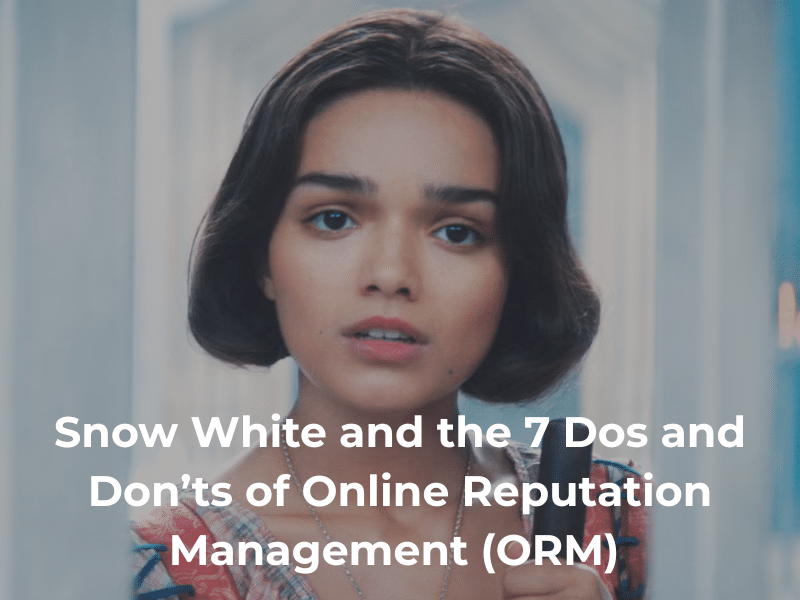- Home
- About
- Services
-
-
- Marketing and Identity
- Content Marketing
- Brand Identity
- Marketing Analytics
- Online Reputation Management
-
- Communications
- Public Relations Firm
- Crisis Management
-
- Case Studies
- Insights

From the beginning of civilization to the launch of the internet in 1983, physical real estate was the golden key for fruitful investments. Times have changed and the increasing value of online visibility has surpassed most real estate evaluations. Insane to think that a single webpage online has the potential to pull more revenue than owning a condo! Or is it… Today we explore the ever expanding potential and power of online visibility with 3 surefire strategies to supercharge your brands online visibility.
Craft a central digital space so magnetic, people want to stay, explore, and return.
Your website should be more than a brochure; it should be an interactive ecosystem where community, content, and conversion intersect.
Primary Software: Webflow + Jetboost – Build dynamic, user-driven web experiences with full creative control and speed.
Supporting Software: Surfer SEO – Optimize for visibility, not just design; ensure search intent matches structure, copy, and keyword density.
In 2025, shortform video isn’t optional — it’s your loudest visual handshake. Hook fast, hit hard, and leave residue in their mind.
Whether it’s storytelling, behind-the-scenes, or micro-tutorials, make your brand undeniably memorable.
Primary Software: DaVinci Resolve Studio – Craft cinematic, color-graded edits with elite control over pacing, tone, and storytelling depth.
Supporting Software: CapCut Pro – Quick, punchy, platform-native edits on the go; ideal for shortform virality and rapid iteration.
3. Leverage the Data-as-Authority Model for your Online Visibility
People trust brands that show they know. Turn your insights into powerful public dashboards, rankings, and value-driven tools.
Data isn’t just for analysis — it’s a storytelling weapon, here’s the top software to utilize. Scale your data!
Create a gated space that feels like a speakeasy for the curious. Make people feel lucky to be on the inside.
Premium content, early access, or even a private newsletter can amplify exclusivity and loyalty.
Online visibility isn’t just about exposure — it’s about creating gravitational pull. Each tool above, when deployed with intention, can create your own digital territory — one that compounds attention, trust, and income. This is the secret sauce for your online visibility!

Just what is the rule of three in advertising?
There is a great quote by DaVinci that states “simplicity is the ultimate form of sophistication.” As humans we tend to overcomplicate systems and make things far more stressful than they need to be. When in reality the answer’s been baked into human nature since the very beginning.
Here’s the answer: three is the magic number.
Not one. Not two. And definitely not four. There’s something about threes—they just tend to click with us. Whether it’s storytelling, decision-making, or structuring your day, the brain handles three better than anything else. It’s optional without being overwhelming. It’s dimensional without being chaotic and it’s sticky. You remember three things. You act on three things. You shape your life with threes without even knowing it. This is the power of “The Rule of Three In Advertising”.
One is good for obsession—but obsession has a cost. It lacks contrast, feedback loops, and range. Two creates a binary—either/or—which often traps you in indecision or polarity, which isn’t always bad per say however… Four or more? Now you’re entering mental clutter territory.

First and foremost productivity and quality is at stake. When the brain is forced to pivot constantly it never enters a true flow state. The brain starts cutting corners. It defaults. It forgets. But three—three is grounded. It gives you context, contrast, and clarity. You can rank them. Triage them. Even weave a story through them. Three gives rhythm. One is a point and two is a line. Three is a shape! Speaking of shapes, let’s talk about how this can shape your brand with the The Rule of Three In Advertising.
Not one. Not two. And definitely not four. There’s something about threes—they just tend to click with us. Whether it’s storytelling, decision-making, or structuring your day, the brain handles three better than anything else. It’s optional without being overwhelming. It’s dimensional without being chaotic and it’s sticky. You remember three things. You act on three things. You shape your life with threes without even knowing it.
Threes don’t just work in habits and jokes. The brain runs best in threes—clarity, contrast, and stickiness. That’s why elite marketers use the hook, solution, ask formula: grab attention, offer value, then invite action. One is too narrow, two creates tension, and four just leads to noise. But three? Three lands. Whether structuring your day or your brand message, build in threes—it’s how we’re wired to think, decide, and move. This is the power of Rule of Three In Advertising.
Recent neuroscience backs the Rule of Three in Advertising—our brains are hardwired to process information in patterns, and three is the smallest number needed to establish a sequence. Studies in cognitive psychology show that people are more likely to remember concepts grouped in threes due to the way our working memory encodes information. This explains why so many iconic slogans, stories, and marketing frameworks succeed when built around triads. Threes don’t just work in habits and jokes. The brain runs best in threes—clarity, contrast, and stickiness. It’s a cognitive sweet spot that delivers maximum impact with minimal overload.
Want elite decision-making? Frame everything as three paths, three patterns or 3 options. Want creative momentum? Structure your day into three focus blocks: mind, body, mission. Want to present options like a master? Give three—always. Three challenges. Three films. Three ways forward. The mind locks onto it like clockwork. There’s power in the triad. Pyramid. Trinity. Rule of Thirds. Even the joke punchline uses it. That’s not a coincidence. It’s cognitive design.
The smartest move? Don’t fight the pattern—build inside of it. This is the power of the rule of three in advertising.

AI Avatars? Just what are we talking about here.
The rise of hyper-realistic AI avatars in digital marketing presents a novel challenge for consumers: how can you tell if the “influencer” promoting a product or message is a real person or a sophisticated digital creation, especially when that avatar might be pushing fake products or false narratives? This question, recently posed in a discussion among digital marketing professionals, highlights a growing concern in an era of increasingly life-like synthetic media.
While seasoned marketers understand the imperative of researching and verifying all claims, the average consumer may find themselves navigating an increasingly blurry line between authentic endorsement and AI-driven promotion. The core of the issue isn’t just about identifying an AI, but discerning the truthfulness of the message, regardless of the nature of the messenger.

AI avatars offer significant advantages for marketing agencies such as ours. They provide a high degree of control over messaging and branding, can be available 24/7, and may reduce costs associated with human influencer collaborations. These digital personas can be customized to align perfectly with a brand’s identity and can engage with audiences through interactive and personalized experiences.
Marketers are already using them to A/B test hooks and narratives, optimizing campaigns before committing to higher-cost productions with human creators. The technology has evolved from simple chatbots to sophisticated entities capable of simulating human-like interactions, understanding emotions, and delivering tailored recommendations.
For the average user, distinguishing a well-developed AI avatar from a human influencer can be incredibly difficult. Especially if the avatar is only on screen for one or two seconds. Modern AI can generate highly realistic appearances and natural-sounding voices. This blurs the lines, making it easier for potentially deceptive practices to take root. The concern is amplified when these avatars are used to promote fake products or disseminate false information.
While there’s no single foolproof method to instantly identify a sophisticated AI avatar or guarantee the veracity of every online message, a combination of critical thinking, observational skills, and healthy skepticism can empower consumers.
Here are the top 4 actions users can take to navigate AI content:
The FTC has been increasingly active in addressing deceptive marketing practices, including those involving influencers and AI Avatars. New rules specifically target fake reviews and testimonials, including those generated by AI, and the agency can seek civil penalties for violations. This regulatory oversight is crucial.
For the digital marketing industry, the use of AI avatars brings ethical responsibilities. Transparency is key. Clearly disclosing the use of AI Avatars is not just about regulatory compliance; it’s about maintaining trust with consumers. Using AI avatars to knowingly promote fake products or spread disinformation is a severe breach of that trust and can have significant legal and reputational consequences.
The line between human and AI Avatars will likely continue to blur. For the layman, the best defense is a proactive and critical approach to all online content. It’s less about becoming an expert in AI detection and more about honing critical thinking skills and always questioning the authenticity of the message and the messenger. By doing their own research, looking for signs of genuine engagement, and prioritizing the verification of claims, consumers can better navigate this evolving digital landscape and make more informed decisions, regardless of who – or what – is doing the influencing.

Okay, pour yourself a lukewarm coffee left over from this morning’s frantic client call, and let’s talk about something that floods our feeds every April: Coachella. Oh, you thought it was just about music and influencers wearing things that look suspiciously like repurposed fishing nets? Bless your heart. For us marketing folks – the ones who’ve been navigating the digital swamp for, let’s say, a while – Coachella is less about the lineup and more about the bottom line.
It’s a masterclass, really. A giant, dusty, ridiculously expensive masterclass in brand relevance, audience engagement, and yes, making it rain (revenue, not actual desert rain, obviously). So, buckle up, buttercups. Let’s dissect how this behemoth of cultural moments translates into marketing gold, and more importantly, how you can apply these principles without needing venture capital funding or selling a kidney.
Every single year, like clockwork, the internet collectively loses its mind over Coachella. Held in Indio, California – a place I assume is normally just sand and quiet desperation – it transforms into the epicenter of youth culture, celebrity sightings, and fashion choices that defy both gravity and common sense.
Why do we care? Because everyone else cares. Or at least, a very large, very engaged, very online segment of the population cares. The sheer volume of searches, social media posts, articles, TikToks, Reels, and existential crises related to #Coachella is staggering. We’re talking millions upon millions of eyeballs glued to screens, soaking in the vibe, the outfits, the drama, the everything. As marketers, ignoring this kind of concentrated attention is like ignoring a fire alarm because you’re busy reorganizing your paperclips. It’s just… professionally negligent. Coachella generates a massive wave of cultural relevance, and smart brands know how to surf it. It’s the ultimate example of meeting your audience where they already are – specifically, scrolling through Instagram wondering if Beyoncé is going to make a surprise appearance again.

There are essentially two ways brands leverage the Coachella phenomenon: the “Go Big or Go Home” official partnership route, and the slightly more guerilla (and budget-friendly) “Content is King (or Queen)” approach.
Think Heineken House, the American Express Lounge, the Revolve Festival (which isn’t technically Coachella but might as well be its ridiculously exclusive, influencer-packed cousin). These are the brands with coffers deep enough to plaster their logos everywhere, create bespoke “experiences,” and pay influencers sums that could probably solve world hunger to attend their branded parties.
This is about direct association. It screams, “We are cool! We are relevant! We have enough money to build a temporary nightclub in the desert!” It works for brand awareness and solidifying an image among a specific demographic. If you are American Express or Heineken, this makes perfect sense. For Sheila’s Sock Emporium? Probably not the best use of funds. The barrier to entry is astronomical, and frankly, most brands just can’t play in that sandbox. And that’s okay. Because there’s another way.
This is where most of us live. We see the Coachella wave cresting, and instead of trying to buy the ocean, we grab our surfboards (our blogs, our social media accounts, our email lists) and ride the swell. If you can’t be at Coachella, you sure as hell should be talking about Coachella.
How? Oh, let me count the ways:
The beauty of this approach? It leverages the existing hype and search volume. People are already looking for Coachella content. By creating valuable, entertaining, or informative content related to it, you draw those eyeballs to your brand. You become part of the conversation without spending seven figures on a branded yurt. It’s about relevance by association, demonstrating you have your finger on the pulse, and cleverly inserting your brand into the narrative. It’s meeting the audience not physically at the festival, but in the digital space around the festival, which is arguably even bigger.
“That’s great,” you say, stirring your now-cold coffee, “But my customers are more interested in the annual Rutabaga Festival than Revolve.” First off, amazing. Second off, perfect.
Coachella is just a massive, globally recognized example of a principle that applies everywhere: Leverage events your audience cares about.

The real takeaway isn’t that every brand needs a Coachella strategy. It’s that every brand needs an event strategy, scaled to their own audience and locality. What’s the “Coachella” of your town, city, or industry?
These are your Coachellas. They offer the same opportunities, just on a different scale:
This local approach achieves the same goals: it demonstrates community involvement, taps into existing local interest and conversation, and makes your brand relevant to people in their own context. It shows you’re not some faceless corporation, but a part of the local fabric.
Look, whether it’s a global mega-event like Coachella or Brenda from Accounting’s Tupperware party (if Brenda is really influential in your office niche, maybe?), the principle remains the same. Events – big or small, global or hyper-local – create focal points of audience attention.
Your job, as savvy marketers who occasionally shower and remember to eat lunch, is to identify those focal points for your audience and figure out how to strategically insert your brand into the conversation. Sometimes that means writing a check for a sponsorship. More often, it means getting clever with your content, understanding the online chatter, and adding value (or at least, entertainment) to the discussion.
It’s about relevance. It’s about meeting people where they are. And yes, ultimately, it’s about driving engagement that leads to revenue. So, take inspiration from the desert spectacle, but don’t feel obligated to buy a lifetime supply of glitter. Look around your own community, your own industry. Your next big marketing opportunity might be less Coachella, more Chili Cook-Off. And honestly, the chili probably tastes better anyway.
Now, if you’ll excuse me, I need to go write a blog post about optimizing landing pages for the upcoming National Squirrel Appreciation Day. Don’t judge. It’s all about relevance.

There’s a big misconception swirling around the creative world—that AI is coming for our imagination, ready to replace the artist, the writer, the filmmaker. But that’s like saying a telescope replaces an astronomer. AI isn’t here to think for you; it’s here to scale your imagination, take your creative reach beyond its natural limits, and elevate your storytelling to uncharted heights.
Imagination thrives when it meets a worthy tool. The pen didn’t kill oral storytelling; it gave it permanence. The camera didn’t kill painting; it redefined composition. AI is no different—it’s a tool, not a takeover. It’s about amplification, not automation.
AI can assist in concept ideation, rapid prototyping, and worldbuilding. Say you’re a filmmaker developing a sci-fi universe—AI can generate concept art, refine mood boards, and help visualize scenes before you even pick up a camera. But the magic still comes from you. The decision-making, the taste, the soul—that’s all human. AI can throw paint on the canvas, but it’s your hand that makes it a masterpiece.
The true power of AI lies in its ability to scale creative output without sacrificing originality. Take scriptwriting—AI can analyze pacing, suggest variations, even generate dialogue in different tones. But is it crafting a compelling, nuanced story with human depth? No. That’s your job. AI just helps you iterate faster, pushing your creative boundaries while keeping the final say in your hands.
AI is also a great sparring partner for imagination—it forces you to refine your vision. If an AI spits out something generic, you know you need to go deeper. If it surprises you with an unexpected twist, you now have a new angle to explore. It’s like jazz—AI throws out a riff, and you riff back, shaping the final composition.
The key to leveraging AI without losing your unique creative fingerprint? Curate, don’t copy. Treat AI like a co-pilot, not the pilot. Use it to draft, experiment, refine, and scale—but never let it dictate your artistic voice.
The real danger isn’t AI replacing creativity. It’s people getting lazy, letting AI do all the heavy lifting, and producing lifeless work. But true artists—those obsessed with craft, storytelling, and nuance—will always use AI as an enhancer, not a crutch.
AI is the ultimate creative enabler—a force multiplier for storytellers, filmmakers, and artists who dare to use it wisely. It doesn’t replace the spark of human ingenuity. Instead, it’s the wind at your back, helping your ideas take flight faster, higher, and further than ever before.
The future of creativity isn’t AI or human imagination. It’s AI with human imagination—scaling, amplifying, and refining the stories only we can tell.
Let’s cut to the chase: SEO isn’t a magic wand. It’s more like a finely tuned, incredibly complex machine that requires constant maintenance and premium fuel. If you’re looking for “cheap and fast” SEO, you’re essentially asking for a rusty go-kart when you need a Formula 1 car. And trust me, that go-kart will break down…
…on the first lap, while you watch everyone driving circles around you.

Why does SEO feel like it’s burning a hole in your wallet? Because it’s an investment, not an expense. Think of it as planting a tree: you won’t see shade tomorrow. It requires nurturing and long-term care to see the benefits. But they are benefits that pay dividends for years.
So, here are the primary reasons why the costs add up:
The ugly truth about SEO is that you need to have a professional or a team of professionals working with you to achieve your goals. That is why there are full time jobs solely dedicated to SEO.
So, should you hire an agency or build an in-house team? Let’s break it down:
When it comes to SEO, you have to select the route you want to walk. If you could only choose two of the following three options, which two would you choose?
Fast.
Cheap.
Quality.
Whichever two you choose, you in turn sacrifice the third option.
So, I’ll ask again. Which two would you choose?
But, April! WHY!? I see people on the subreddit for SEO saying they can do my SEO for only a few hundred per month! Why are you telling me that your agency charges thousands of dollars!?
First of all, if you are on Reddit to get pricing rates for your business, you have some other issues you need to address before we chat.
Second, beware of companies promising “guaranteed results” for peanuts. They’re likely using black-hat tactics that will get you penalized by Google and are notoriously hard to recover from. Remember, Google is smarter than you think. You can’t out SEO the company that basically invented it.
Third, SEO is an investment in the long-term growth and profitability of your brand or company. SEO gives your business the stickiness on search engines, primarily Google, that you want.
SEO is a marathon, not a sprint.
So, how long does it take to see results?
You’re going to hate me for this…. It depends…
If you are in a niche and highly competitive industry, we typically see results between 12-18 months.
If you’re in an industry with little competition, you may see results fairly quickly. However, you won’t have the traffic to see the investment translate into profit right away.
If you fall somewhere between these two extremes, you can expect to see moderate results anywhere from 9-18 months.
It takes time to build authority and see results. But the payoff is significant: increased organic traffic, higher conversion rates, and a stronger brand presence. Let’s not forget that nearly ⅓ of all organic traffic still clicks on the number one position on Google.
While you may think that SEO is expensive, take a moment and calculate how much you are spending on ads on a yearly basis. You will be forced to continue paying for those ads, as they continue to rise in cost, because you never invested the money and time into the SEO that your business needs. If you had just spent the time and money, you’d be spending significantly less in ads long-term. That is why this digital marketing strategy is called an investment. And if you don’t know what that means, please leave.
I can’t help you.
If you’re looking for a “quick fix”, go buy a lottery ticket and hope like everyone else that plays the lottery. At least then maybe you’ll understand the odds. If you want sustainable growth, invest in SEO. It’s the digital equivalent of planting an oak tree and you’ll be enjoying the shade for years to come.
Here is where I am supposed to segue into the call to action to get you to call our company. But I do not want you to click that button unless you have money and time to invest in your long-term digital success. If you do have those items, please contact me for a consultation. Then, you and I can talk about how we can help you by building an SEO strategy that’s tailored to your business goals.
Alright, buckle up, because we’re about to dissect a real-life ORM disaster, still unfolding, and starring none other than Rachel Zegler and her, shall we say, atrocious approach to promoting the “Snow White” remake. Let’s call a spade a spade. She has flopped on a monumental level. So, I’m going to call this a written masterclass in what not to do.

Seems obvious doesn’t it? Don’t trash the source material. I’m not an actor, but I feel like this has to be in some sort of 101 class. Zegler’s comments about the original animated “Snow White” being outdated and focusing on a “stalker” romance were, to put it mildly, ill-advised. Alienating the very audience that holds the source material dear is a cardinal sin. If anyone were to ever trash my all-time favorite films, I will fight you. (Die Hard is a Christmas movie!)
Instead of gracefully addressing criticism, Zegler opted for a series of cryptic and sometimes dismissive social media posts. This only fueled the fire, turning a simmering controversy into a full-blown inferno.
Zegler’s comments, while perhaps intended to be empowering, were widely perceived as condescending and tone deaf. She failed to grasp the emotional connection people have with the original film.
ORM Lesson: Conduct thorough audience research. Understand their values and expectations before making public statements. If you don’t have the time to perform this research, hire a professional or at the very least, don’t talk, text, or tweet!
In the age of viral clips and rapid-fire social media, context is everything. Zegler’s comments were amplified and distorted, leading to widespread backlash.
ORM Lesson: Be mindful of how your words can be interpreted. Carefully consider the potential for misinterpretation. Again, if you can’t follow the script the agency has provided you, hire someone to work with you on your press tours.
Zegler seems to have adopted a “let it burn” strategy, which is, frankly, baffling. A proactive approach, involving carefully crafted statements and strategic media appearances, could have mitigated the damage.
April’s ORM Advice: If you find yourself in a situation where your brand, company, or you yourself have negative press coverage, stop and assess the situation. If you are not equipped to control the narrative, immediately contact us. We have performed online reputation management for years and are trained in developing a plan within hours and implementing a strategy within days.
Focus on positive aspects of you, your brand, your company, and/or your project. For Rachel Zegler’s case, she could have focused on the film’s diverse cast and modern themes. She could have highlighted the hard work of the production team, and shift the conversation away from controversy.
April’s ORM Advice: In addition to shifting the narrative, you need to have content created and published about you, your company and/or brand. This content should focus on anything and everything positive. When you were working in the location for six months, did you donate money? Did you volunteer? What causes do you and/or your company support? Putting out pieces about the positive, also significantly helps to suppress the negative.
Zegler’s situation underscores the importance of professional ORM. A seasoned PR or ORM team could have guided her through this minefield, preventing many of these missteps.
Rachel Zegler’s “Snow White” saga serves as a cautionary tale for anyone, whether you are in the international public eye or even your local one. While may be talented, but her ORM strategy, assuming she even had one, has been a complete failure from the start.
I hope you all take something away from the seven dos and don’ts of online reputation management. Learn from Rachel Zegler’s mistakes, and remember: in the digital age, your reputation is your most valuable asset. Don’t be the next Rachel Zegler. Contact us immediately.

For almost a decade, we’ve been bombarded with predictions of its imminent dominance. “The year of voice search!” screamed the headlines, year after year. The Google speech team introduced voice search in the summer of 2011, and followed closely by Apple’s introduction of Siri in October of 2011, voice search was touted as a novelty feature that would revolutionize search. Marketing “gurus” preached its transformative power and scrambled to write the blog articles that we all read. Yet, here we are, in 2025, and voice search remains a tool used by the likes of our parents and grandparents yelling into their iphones and TVs, a far cry from the world-altering force it was prophesied to be.
The narrative was compelling. Voice search, we were told, was the natural evolution of search, more conversational, more convenient, more human. Voice search was going to liberate us from using our mere mortal hands to type, especially on mobile devices. “Think about it,” the experts would say, “it’s so much easier to ask a question than to type it!” And it made sense, conceptually. But the reality never quite matched the hype.
Search engines, car manufacturers, smart phone developers, and even household appliance brands all understandably invested in the idea and consistently emphasized the rise of voice search, from 2011 to 2016 to now. More than likely to recuperate their investment costs.
The experts released statistics (often vague and contextually limited) showing the history and future of voice search. Businesses, eager to avoid missing the next big thing, dutifully added voice search optimization to their checklists. Content was tweaked to be more conversational, long-tail keywords became the focus, and schema markup was meticulously implemented.
Yet, despite all the effort and all the pronouncements, voice search hasn’t become the phenomenon it was supposed to be. What might be more ubiquitous with voice search, might be the amount of articles about the difficulties users experience with voice search and how brands should “optimize” to avoid them.
While some use voice assistants for simple tasks like setting timers, playing music, making phone calls, or even sending a text message, the widespread adoption of voice for complex search queries simply hasn’t materialized. Why?
Several factors likely contribute to this disconnect. Privacy concerns, accuracy issues (especially in noisy environments), and the simple fact that typing often remains faster and more discreet, but all play a role. However, I believe that the main reason is that voice search hasn’t fundamentally changed how we interact with information. Many times, the voice engine with which we interact either cannot understand what is being said or delivers incorrect search results. Also, with the use of autofill on our devices and within the search engine itself, typing is not a difficult task in and of itself.
At the end of the search, if it is successful, we still receive the same search results we would if we type it in, it’s just delivered through audio. The experience, while marginally different, isn’t revolutionary.
And now, the narrative has moved to another “next big thing” in search and SEO. Except this isn’t new nor is it big. The spotlight has moved, a new star is emerging, and no, it’s not AI.
It’s Visual Search??
While visual search has been around since the advent of Google images, the promises are wide and great. Just optimize your images and you’re in!
While voice search was struggling to find its footing, visual search has been around for many years. The instruction to optimize your website, blog, and social media images has always existed. With the thought leaders in the SEO industry now pushing visual search as the savior to “reshape search behavior” I, for one, believe this is another attempt at SEO thought leaders to gaslight their followers. Due to the demands of search engines, the constant need to make sure there is a stream of content to push out to the masses is the only reason for these individuals to push such a fallacy.
Much like copywriting for a website or blog, businesses and individuals have always been advised to optimize their images with correct image sizes and alt tags. With the sites that have been around for many years and already have high authority scores, the image search is and always has been dominated by them. Just like any other foray into SEO, it takes time to rank for images or copywriting. This is nothing “new” and it certainly isn’t groundbreaking.
While I will cop to the fact that Google Lens is increasing its capability to recognize images, shapes, people, and products for shopping, the process to do so is not new. My rant about visual search, however, is another article for another time.
Now back to the topic at hand.
It’s not that voice search has completely disappeared. It’s still here; a useful tool for certain tasks. But the grand vision of voice search dominating the digital landscape has flopped. The promised revolution never arrived. Instead, the internet, ever fickle, is trying to move on to the next shiny thing, leaving the ghost of voice search and optimization rattling around in the SEO attic. Let this serve as a reminder that hype doesn’t always equal reality. Perhaps, one day, voice search will truly take off. But for now, it stands as a cautionary tale: even the most compelling narratives can fall victim to the complexities of human behavior and technological evolution.

Being in the digital marketing world as long as I have, I am hyper aware of trends, and not just on social media platforms. I look for the bigger trends in digital marketing and how these impact businesses and the future of marketing itself. While on Instagram and TikTok a few weeks ago, I came across a video that slapped me right in the face and made me feel extremely disappointed in myself that I didn’t see this sooner.
What video was this? It is a video an artist made to showcase his art. Sounds boring, right? Wrong! HERE is the video if you want to see how he nailed organic marketing and why I was caught off guard.
Now, why did Mr. Gethyn Davies’ video resonate so much with me that I’m taking time to write an entire article around it? Because his video was anything but boring, and that was the sole reason it performed so well. He recognized what I tell my clients all day everyday: Create exciting, relatable content with hooks to immediately draw in users and increase engagement.
But what if your channel, your brand, your content is not inherently exciting? Well, that’s why I’m writing this today.
Let’s be real, “organic marketing” sounds like a lovely, sun-drenched field of wildflowers, doesn’t it? You plant your content seeds, nurture them with creativity, and watch them bloom. Except, that field is actually a digital gladiatorial arena. And the audience? A fickle emperor with a thumb twitch. And those wildflowers? They’re at the mercy of algorithms that prioritize chaos over daisies.
We’ve all been there: your latest masterpiece, a carefully crafted piece of content which you spent time researching, scripting, creating, and editing, completely flops. Meanwhile, a video of a cat falling off a table goes viral. Why? Because the digital overlords, those algorithms powering Instagram, TikTok, and the rest, have decided that controversy and emotional rollercoasters are the main course, and have nothing for the amuse bouche that is your sad little video.
Here’s the cold, hard truth: these platforms don’t care about your brand’s carefully curated aesthetic, your amazing talent you want to showcase to the world, nor your insightful blog post. They care about engagement. ENGAGEMENT!!!! And what drives engagement?
So, what’s a digital marketer to do? Abandon all hope? Not quite. But you do need to understand that “organic” is a construct, a mirage created by algorithms. Here’s how to navigate this digital minefield:
The reality is that “organic” is a myth. The algorithms are the puppet masters, and we’re all dancing to their tune. By understanding their power and adapting our strategies, we can navigate this complex landscape and find success in the digital age.
Just remember, in the digital jungle, the algorithm is king. But, even kings can be overthrown.

AI is everywhere—writing your emails, generating images, even recommending what you should binge-watch next. But let’s be real… Most brands use AI in the most basic ways possible. Chatbots? Auto-generating captions? Come on, time to up your game.
If you really want to unlock AI’s power, you’ve got to think beyond the obvious. Here are three overlooked ways you should be using AI to outsmart your competition and make your brand unforgettable.

Surveys are great and all but… AI can tell you what your customers will buy next before they even know they need it.
How You Say? AI-powered predictive analytics can analyze search trends, purchase history, and even social media chatter to anticipate demand.
Why it’s genius: You can launch campaigns right before your audience starts looking for a product, making you the first option they see.
Example: A sneaker brand could use AI to predict which color-way is about to trend based on Instagram fashion posts—then release a limited edition in that exact shade.
Most AI-generated content sounds like, well… an AI wrote it. But what if your brand’s voice felt as real as your favorite stand-up comedian or your best friend?How? Train AI on your brand’s tone of voice using past emails, social posts, and customer interactions.
Why it’s genius: Instead of cranking out generic content, AI will write exactly how you or your team would—but faster.
Example: A small coffee shop could feed AI its quirky, fun social media tone, so every post and email feels like it was written by the barista who knows your order by heart.
AI isn’t just a tool—it’s a treasure hunter for lost revenue.How? AI can scan your website, ads, and even customer service chats to find leaks—areas where potential customers drop off instead of buying.
Why it’s genius: Instead of spending more on ads, you fix the gaps and convert more visitors into buyers.
Example: An online store could use AI to see where shoppers abandon carts and find out if a confusing checkout process is costing them thousands per month.
Most brands are using AI in the most boring ways possible. If you want to stand out, you’ve got to get creative.
Start using AI to predict trends, sound more human, and uncover hidden revenue. Your competition won’t know what hit them.
Want to see AI work its magic for your brand? Try one of these tactics today!